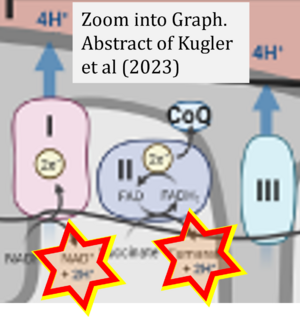Kugler 2023 J Appl Physiol (1985)
| Kugler BA, Thyfault JP, McCoin CS (2023) Sexually dimorphic hepatic mitochondrial adaptations to exercise: a mini-review. J Appl Physiol (1985) 134:685-91. https://doi.org/10.1152/japplphysiol.00711.2022 |
Kugler BA, Thyfault JP, McCoin CS (2023) J Appl Physiol (1985)
Abstract: Exercise is a physiological stress that disrupts tissue and cellular homeostasis while enhancing systemic metabolic energy demand mainly through the increased workload of skeletal muscle. Although the extensive focus has been on skeletal muscle adaptations to exercise, the liver senses these disruptions in metabolic energy homeostasis and responds to provide the required substrates to sustain increased demand. Hepatic metabolic flexibility is an energetically costly process that requires continuous mitochondrial production of the cellular currency ATP. To do so, the liver must maintain a healthy functioning mitochondrial pool, attained through well-regulated and dynamic processes. Intriguingly, some of these responses are sex-dependent. This mini-review examines the hepatic mitochondrial adaptations to exercise with a focus on sexual dimorphism.
• Bioblast editor: Gnaiger E
Hydrogen ion ambiguities in the electron transfer system
Communicated by Gnaiger E (2023-10-08) last update 2023-11-10
- Electron (e-) transfer linked to hydrogen ion (hydron; H+) transfer is a fundamental concept in the field of bioenergetics, critical for understanding redox-coupled energy transformations.
- However, the current literature contains inconsistencies regarding H+ formation on the negative side of bioenergetic membranes, such as the matrix side of the mitochondrial inner membrane, when NADH is oxidized during oxidative phosphorylation (OXPHOS). Ambiguities arise when examining the oxidation of NADH by respiratory Complex I or succinate by Complex II.
- Oxidation of NADH or succinate involves a two-electron transfer of 2{H++e-} to FMN or FAD, respectively. Figures indicating a single electron e- transferred from NADH or succinate lack accuracy.
- The oxidized NAD+ is distinguished from NAD indicating nicotinamide adenine dinucleotide independent of oxidation state.
- NADH + H+ → NAD+ +2{H++e-} is the oxidation half-reaction in this H+-linked electron transfer represented as 2{H++e-} (Gnaiger 2023). Putative H+ formation shown as NADH → NAD+ + H+ conflicts with chemiosmotic coupling stoichiometries between H+ translocation across the coupling membrane and electron transfer to oxygen. Ensuring clarity in this complex field is imperative to tackle the apparent ambiguity crisis and prevent confusion, particularly in light of the increasing number of interdisciplinary publications on bioenergetics concerning diagnostic and clinical applications of OXPHOS analysis.
Labels: MiParea: Respiration, Gender, Exercise physiology;nutrition;life style
Tissue;cell: Liver



